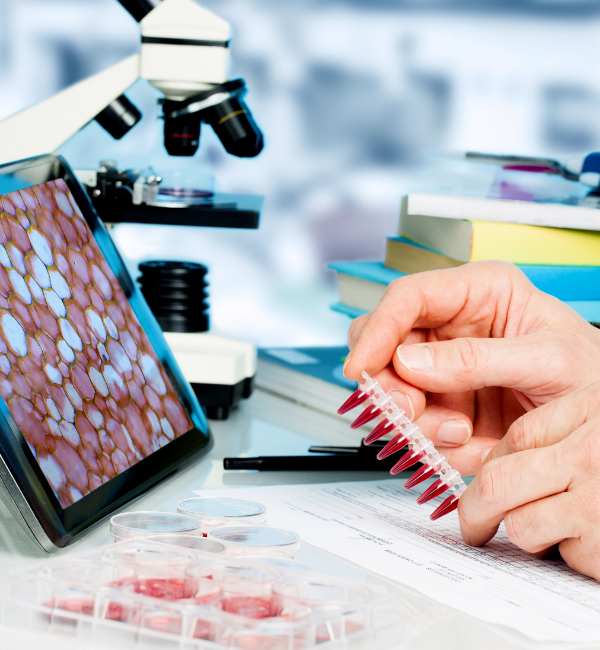DNA Bracelets


Students make a DNA bracelet following the base-pair rule.
What You Need
Materials per student
- Pieces of elastic cord (2)
- Red beads (13)
- Green beads (13)
- Blue or purple beads (8)
- Yellow beads (8)
- Scissors
- Tape
Guide:
Safety Notes
Ensure you are familiar with Let's Talk Science's precautions with respect to safe virtual outreach to youth.
What To Do
To make their DNA bracelets, each student will:
- Tie the two pieces of elastic together (see photo in guide).
- Tape them to a table or book or something to help hold them in place.
- Refer to the guide for the DNA sequence that will be used to build the first strand of the bracelet. They will add the corresponding coloured beads in order on the first strand.
- Use the base pair rule to match the beads from the first strand to the second strand.
- A (green) pairs with T (red)
- C (blue or purple) pairs with G (yellow)
- After finishing both strands, students will twist one strand over the other and tie both together to make a bracelet.
Discovery
DNA is made of 2 strands (like your bracelet) that are twisted in a special shape called a double helix. DNA's alphabet is made up of 4 letters (called bases). The 4 letters pair together following the 'base-pair rule': Adenine (A) pairs with Thymine (T) and Cytosine (C) pairs with Guanine (G).
DNA (deoxyribonucleic acid) is found in all living things. It's what makes us look like we do (for example, the colour of our eyes, how tall we are) and also tells our cells how to function. DNA is found in our cells and we are made up of trillions of cells.
What's Happening?
DNA is made of 2 strands (like your bracelet) that are twisted in a special shape called a double helix. DNA's alphabet is made up of 4 letters (called bases). The 4 letters pair together following the 'base-pair rule': Adenine (A) pairs with Thymine (T) and Cytosine (C) pairs with Guanine (G).
Why Does It Matter?
DNA (deoxyribonucleic acid) is found in all living things. It's what makes us look like we do (for example, the colour of our eyes, how tall we are) and also tells our cells how to function. DNA is found in our cells and we are made up of trillions of cells.